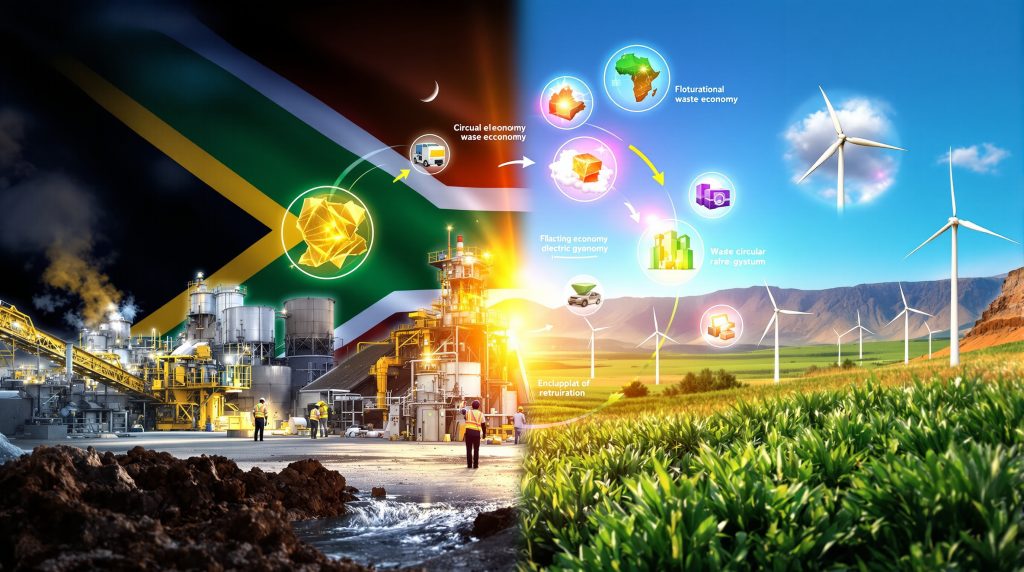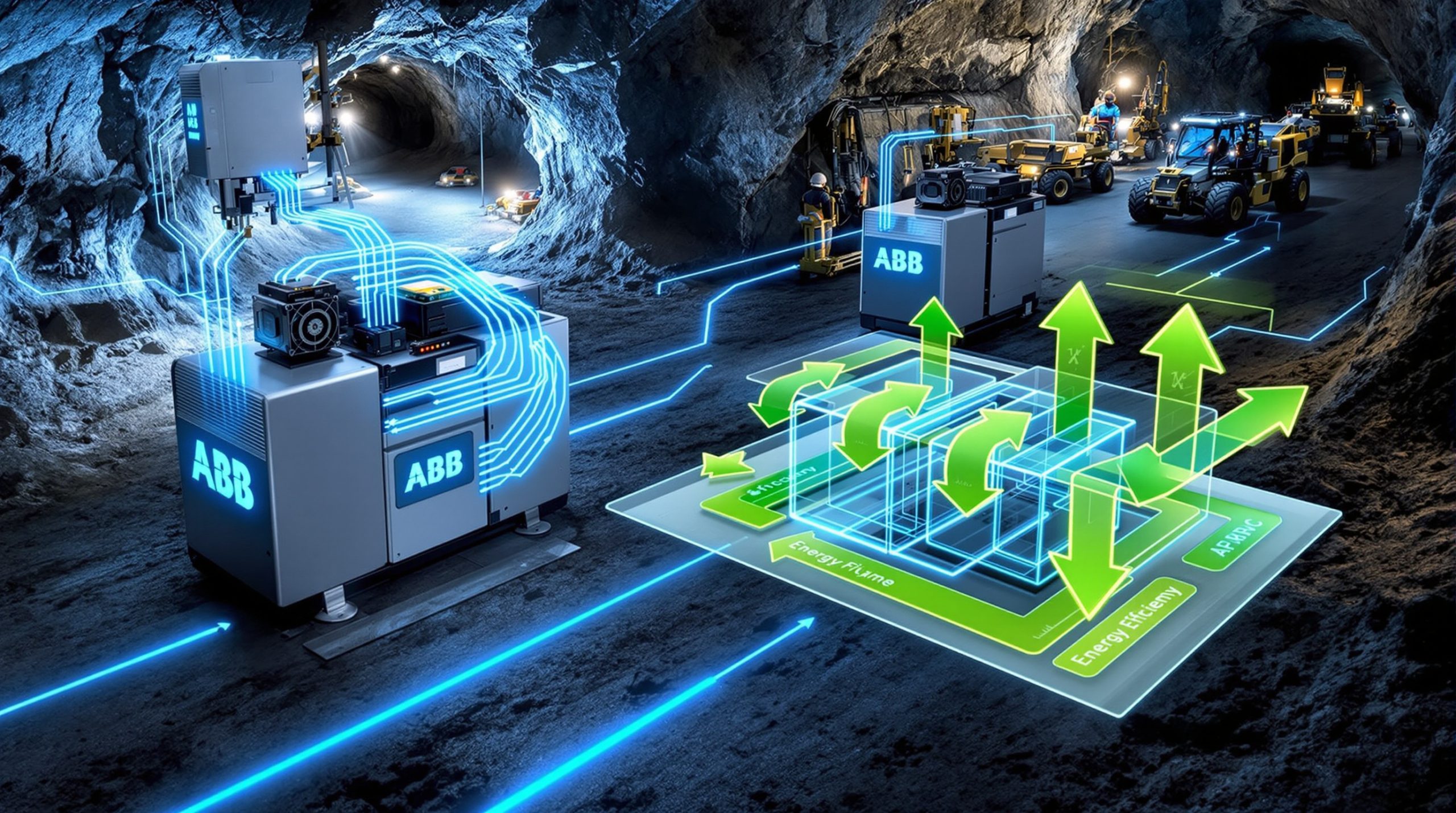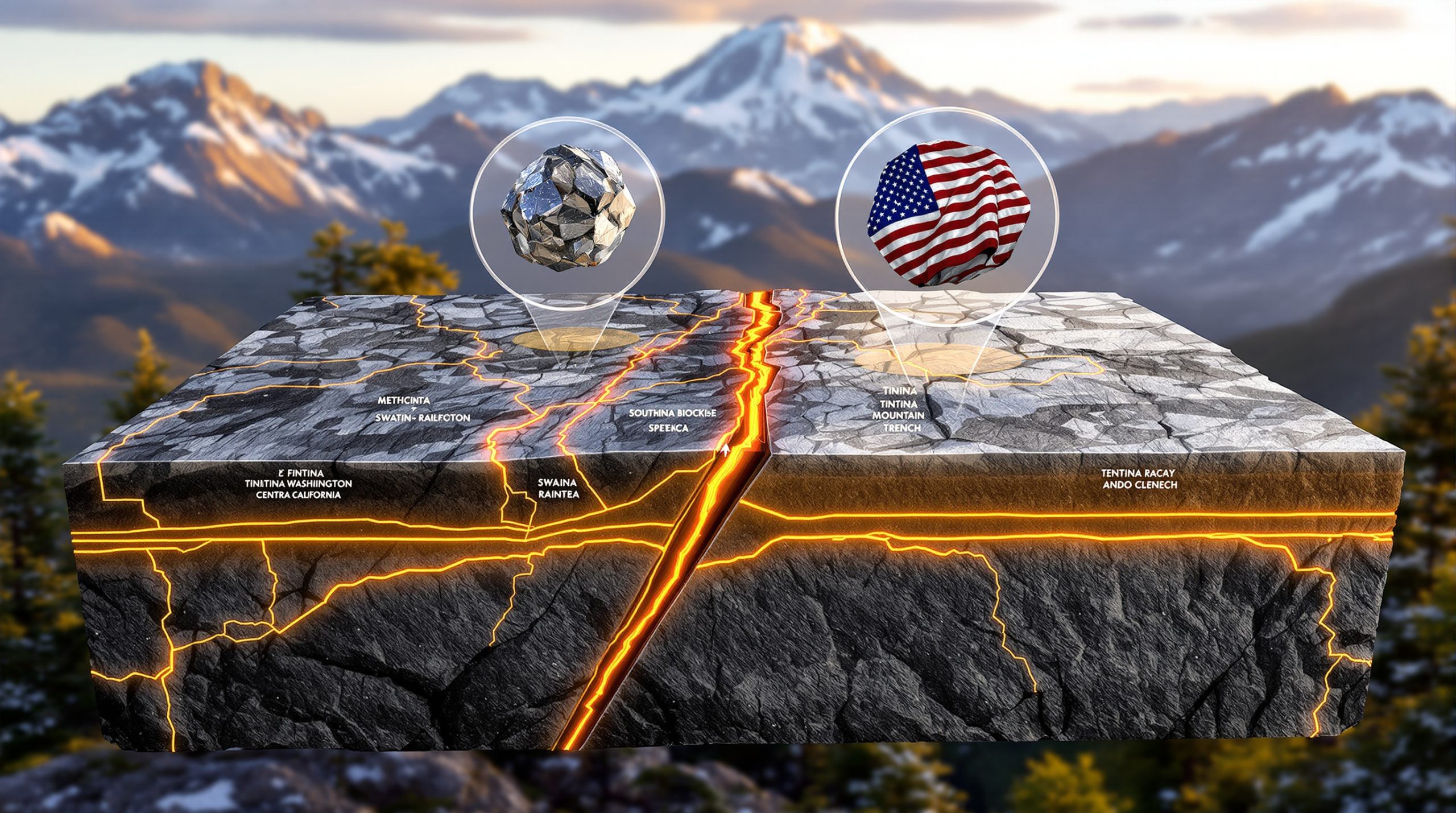How Is South Africa Revolutionizing Rare Earth Mining?
South Africa stands at the forefront of sustainable rare earth element (REE) mining, developing innovative approaches that transform environmental liabilities into valuable resources. This transformation comes at a critical time when global demand for these elements continues to surge amid growing environmental concerns. The global rare earth elements market was valued at approximately $8.6 billion in 2023 and is projected to reach $18.3 billion by 2030, underscoring the economic significance of this sector.
South Africa's strategic position as a holder of significant rare earth reserves places it in an advantageous position to lead sustainable REE production. The country is pioneering alternative extraction methods that minimize environmental impact while maximizing resource recovery.
The Critical Role of Rare Earth Elements in Green Technology
Rare earth elements serve as fundamental components in numerous renewable energy systems. Electric vehicle batteries require approximately 1 kg of rare earth elements per vehicle for permanent magnet motors, highlighting their importance in transportation electrification.
Wind turbine generators use neodymium and dysprosium for permanent magnets, with offshore turbines requiring even higher concentrations. According to the International Energy Agency, wind turbines require between 200-600 kg of REEs per megawatt of capacity.
Additional applications include:
- Solar panel manufacturing
- Energy-efficient lighting
- Advanced electronics and computing systems
- Medical imaging technologies
- Defense applications
South Africa's Strategic Position in the REE Market
While South Africa's exact percentage of global rare earth reserves requires verification from recent geological surveys, the country possesses significant deposits strategically positioned to support growing demand.
The country's approach to REE production differs markedly from traditional methods, focusing on extracting these valuable elements from existing waste streams rather than new mining operations.
Rainbow Rare Earth has demonstrated this innovative approach by achieving a 65% REE recovery rate from phosphogypsum waste at their Phalaborwa project, proving the viability of waste-to-resource conversion methodologies.
Why Traditional Rare Earth Mining Creates Environmental Challenges
Conventional REE extraction methods come with substantial environmental costs that have historically been poorly managed. Understanding these challenges highlights why South Africa's alternative approaches represent such a significant breakthrough.
Environmental Footprint of Conventional REE Extraction
Traditional REE mining generates staggering volumes of waste. Research published in Nature Reviews Earth & Environment shows that conventional mining can generate 8,500-12,000 tons of tailings per ton of REE concentrate produced.
Water consumption presents another significant concern, with conventional REE processing requiring between 60-120 cubic meters per ton of ore processed according to studies in the Journal of Cleaner Production.
Other environmental impacts include:
- Extensive land disturbance through open-pit mining operations
- High energy consumption during extraction and processing
- Chemical-intensive separation processes using acids and solvents
- Radioactive waste management concerns from thorium and uranium often present in REE deposits
Biodiversity Threats in Resource-Rich Regions
Mining operations frequently occur in ecologically sensitive areas, leading to habitat fragmentation and biodiversity loss. The removal of vegetation and topsoil destroys native plant communities and disrupts wildlife habitats.
Soil contamination from mining activities can persist for decades, affecting soil fertility and plant growth. Heavy metals and processing chemicals can leach into groundwater, affecting aquatic ecosystems and wildlife dependent on water sources.
Social Impact Concerns
Traditional mining has often resulted in displacement of local communities, creating social disruption and loss of traditional livelihoods. Workers and nearby communities face health risks from exposure to dust, chemicals, and potential radiation in inadequately regulated operations.
Historically, economic benefits from mining operations have rarely reached affected populations proportionally. Before recent regulatory changes, rehabilitation requirements were limited, leaving communities with degraded environments after mining industry evolution ceased.
How Is South Africa's New Legislation Reshaping Mining Practices?
The 2025 Mineral Resources Development Bill (MRDB) represents a watershed moment in South Africa's approach to mining regulation, introducing comprehensive frameworks that balance resource extraction with environmental protection.
The 2025 Mineral Resources Development Bill (MRDB)
The MRDB provides regulations for managing mine tailings and closures, aligning South Africa's mining practices with global sustainability standards. Crucially, it establishes financial mechanisms for environmental rehabilitation, ensuring resources are available for cleanup and restoration activities.
Key Provisions for Environmental Management
The bill introduces mandatory environmental impact assessments with stricter evaluation criteria than previous regulations. It establishes enhanced requirements for mine tailings management, including proper lining, monitoring, and maintenance protocols.
Comprehensive mine closure planning becomes a requirement from the project inception phase, rather than as an afterthought. Financial provisions for environmental rehabilitation must be established and maintained throughout a project's lifecycle.
Regulatory Oversight Improvements
The MRDB strengthens monitoring mechanisms for large-scale operations, increasing inspection frequency and reporting requirements. It formally recognizes and regulates small-scale mining operations, bringing them into the legal framework with appropriate oversight.
The legislation aligns South African mining practices with international sustainability standards, improving global competitiveness. Enhanced enforcement capabilities and meaningful penalties for non-compliance provide teeth to the regulatory framework.
Economic and Social Development Integration
Requirements for community benefit-sharing ensure local populations participate in the economic gains from mining activities. Skills development and local employment provisions help build sustainable economic opportunities beyond mining operations.
The bill provides support for small-scale mining operations to enter the formal economy with appropriate training and resources. Throughout, it balances economic development needs with environmental protection imperatives.
What Innovative Technologies Are Transforming South Africa's REE Industry?
South Africa's most significant innovation in REE production involves extracting these valuable elements from waste streams rather than new mining operations. This approach simultaneously addresses environmental liabilities while producing critical materials.
Extracting REEs from Phosphogypsum: The Phalaborwa Project
Rainbow Rare Earth's groundbreaking project in Phalaborwa demonstrates how industrial waste can become a valuable resource while simultaneously addressing environmental damage. The company has developed methods to extract REEs from phosphogypsum stacks, the waste byproducts of phosphoric acid production.
Technical Innovation Highlights
The process achieves a remarkable 65% REE recovery rate from phosphogypsum waste that was previously considered an environmental liability. By targeting existing waste streams, the method eliminates traditional mining hazards and environmental disruption associated with new excavations.
The approach reduces processing timeframes compared to conventional mining, which requires extensive exploration, permitting, and development phases. Lower operational costs through waste utilization improve economic viability while minimizing workforce safety risks.
Environmental Rehabilitation Components
The process neutralizes acidic water contamination that had previously leached from unlined phosphogypsum stacks into groundwater. Proper restacking of processed materials with appropriate lining prevents future contamination issues.
Water recycling within the operation eliminates external water requirements, reducing pressure on local water resources. The process converts waste material into commercially viable gypsum products, creating additional revenue streams.
Comparative Advantages of Waste-Based REE Extraction
| Factor | Traditional REE Mining | Waste-Based REE Recovery |
|---|---|---|
| Land Disturbance | Extensive new excavation | No new land disturbance |
| Water Usage | High consumption | Recycled contaminated water |
| Energy Requirements | Intensive processing | Reduced energy footprint |
| Chemical Usage | High volumes | Optimized chemical processes |
| Radioactive Waste | New waste generation | Addresses existing waste |
| Timeline | Extended development period | Faster implementation |
| Cost Structure | High capital investment | Lower startup costs |
What Makes the Phalaborwa Project a Model for Sustainable Mining?
The Phalaborwa project demonstrates how historical environmental liabilities can be transformed into resources while simultaneously remediating contaminated sites. This dual-purpose approach creates a model for addressing similar challenges globally.
Historical Context of the Site
The site has operated since 1964, hosting three successive phosphate-fertilizer companies over decades of production. During this period, decades of unregulated waste disposal practices created significant environmental problems.
The most problematic legacy was unlined phosphogypsum stacks causing groundwater contamination through acidic leachate. These accumulated environmental liabilities required remediation regardless of potential resource recovery, presenting both a challenge and opportunity.
Rehabilitation Strategy Implementation
Rainbow Rare Earth signed an agreement with Bosveld Phosphates in 2020 to manage the site, implementing a comprehensive rehabilitation strategy. CEO George Bennett highlighted how decades of insufficient regulations had allowed environmental damage to accumulate.
Environmental Restoration Approach
The project began with comprehensive assessment of contamination extent to establish baseline conditions and rehabilitation targets. Strategic processing of waste stacks for REE recovery provides economic incentives for environmental cleanup.
Implementation of proper containment systems prevents future contamination issues once materials are reprocessed. Groundwater remediation through acidic water neutralization addresses existing contamination while providing process water.
Circular Economy Applications
The project exemplifies circular economy principles by converting waste material into valuable rare earth elements for use in green technologies. It repurposes neutralized water for processing operations, eliminating the need for additional water resources.
Marketing clean gypsum for commercial applications creates additional revenue streams from former waste. The ultimate goal involves returning processed land to its natural state, completing the restoration cycle.
Measurable Environmental Outcomes
While specific measurements require ongoing monitoring, expected outcomes include reduction in groundwater contamination levels as acidic leachate sources are removed. Progressive elimination of toxic waste stacks will visibly transform the landscape.
Restoration of natural landscape features will occur as areas are rehabilitated. Biodiversity recovery in rehabilitated areas should follow as soil and water quality improve.
How Does Sustainable REE Mining Support South Africa's Economic Goals?
South Africa's approach to sustainable REE production aligns with broader economic development objectives, creating opportunities beyond simple resource extraction.
Economic Benefits of Sustainable REE Production
The waste-to-resource approach creates specialized technical jobs in processing facilities requiring skilled workers. This develops exportable expertise in sustainable mining practices that can be leveraged internationally.
Economically, the approach reduces environmental liabilities and cleanup costs that would otherwise fall to government or taxpayers. Revenue generation from previously considered waste transforms liabilities into assets.
Strategically, this positions South Africa in high-value supply chains for energy transition strategies, creating downstream economic opportunities.
Strategic Positioning in Global REE Markets
South Africa can differentiate its REE production through environmentally responsible practices that appeal to sustainability-conscious buyers. This meets growing demand for ethically sourced materials in high-tech and renewable energy sectors.
The approach aligns with ESG (Environmental, Social, Governance) investment criteria increasingly important to international investors. It reduces vulnerability to regulatory restrictions that may target environmentally harmful production methods.
Long-term Economic Sustainability Factors
Reduced remediation costs through preventative measures improve long-term economic performance. Enhanced investor confidence through regulatory compliance reduces capital costs and improves project financing options.
Improved community relations through responsible practices reduce project delays and social license risks. Lower operational risks through advanced planning enhance project economics and predictability.
What Challenges Remain in Scaling Sustainable REE Mining?
Despite promising initial results, several challenges must be addressed to scale sustainable REE mining approaches throughout South Africa and beyond.
Technical and Operational Hurdles
Variability in waste material composition across different sites may require process modifications. Process optimization for different waste streams demands ongoing research and development.
Scaling laboratory successes to commercial production volumes presents engineering challenges. Balancing recovery rates with economic viability requires careful process control and optimization.
Maintaining quality standards for recovered materials to meet buyer specifications presents ongoing quality control challenges.
Financial and Investment Considerations
Initial capital requirements for processing facilities may be substantial despite lower costs than traditional mining. Longer payback periods for rehabilitation components can challenge traditional investment models.
Uncertain pricing in volatile REE markets creates revenue projection challenges. Competition with conventional, lower-cost producers, particularly from regions with fewer environmental controls, remains a challenge.
Securing investment for innovative but unproven approaches may require creative financing structures or government support.
Regulatory and Compliance Complexities
Evolving standards for waste processing create regulatory uncertainty for long-term planning. Permitting requirements for novel extraction methods may face delays as regulators develop appropriate frameworks.
Demonstration of rehabilitation effectiveness may require extended monitoring periods. Monitoring and reporting obligations add operational overhead and compliance costs.
Cross-border regulatory alignment for exports may present challenges for international market access.
How Can Other Regions Apply South Africa's Sustainable Mining Model?
The principles and approaches developed in South Africa's sustainable REE mining sector have potential applications globally, particularly in regions with similar industrial waste streams.
Transferable Elements of South Africa's Approach
Waste-to-resource conversion methodologies can be adapted to various industrial byproducts containing valuable elements. Regulatory frameworks balancing development and protection provide models for other jurisdictions.
Integration of rehabilitation with extraction processes demonstrates how environmental remediation can become economically viable. Small-scale mining inclusion strategies help formalize informal operations.
Public-private partnership models for environmental remediation demonstrate how government and industry can collaborate effectively.
Regional Adaptation Considerations
Local waste stream identification and characterization must precede technology implementation. Customization of extraction technologies to specific waste types will be necessary based on composition variations.
Alignment with existing regulatory frameworks requires careful navigation of local laws and regulations. Community engagement and benefit-sharing approaches must respect local cultural and social contexts.
Economic viability assessment for different market conditions must account for local costs, infrastructure, and access to markets.
Implementation Roadmap for Similar Projects
- Comprehensive waste characterization and REE content analysis to identify resource potential
- Laboratory-scale process development and optimization for specific waste streams
- Environmental impact and remediation planning integrated with extraction strategy
- Regulatory approval and stakeholder engagement to secure social license
- Pilot plant implementation and validation of recovery rates and economics
- Commercial-scale facility development with appropriate capital investment
- Concurrent extraction and rehabilitation execution with monitoring
- Ongoing monitoring and process improvement to maximize recovery and environmental outcomes
What Does the Future Hold for Sustainable REE Mining in South Africa?
As South Africa continues to develop its sustainable REE mining sector, several emerging trends and technologies show promise for further innovation and improvement.
Emerging Technologies and Approaches
Advanced separation techniques with reduced chemical usage are under development, promising more efficient recovery. Artificial intelligence applications in process optimization may improve recovery rates and reduce costs.
Renewable energy integration in processing facilities could further reduce environmental footprint. Enhanced recovery methods for low-concentration materials may expand the resource base.
Automated monitoring systems for environmental compliance can improve regulatory reporting and reduce costs.
Potential Expansion of Sustainable Mining Practices
Application to other waste streams beyond phosphogypsum could diversify the resource base. Integration with broader circular economy initiatives may create additional value streams.
Expansion to additional rare earth and critical mineral recovery could address supply chain vulnerabilities. Development of regional processing hubs for various waste types may achieve economies of scale.
Cross-industry partnerships for comprehensive waste utilization could create synergies between sectors.
Long-term Vision for South Africa's Mining Sector
The future points toward transition from extraction-focused to mine reclamation importance across the sector. South Africa has potential for leadership in sustainable mining technology development globally.
Creation of specialized expertise in environmental remediation could become an exportable service. Establishment as a preferred source for responsibly produced REEs would secure market position.
A balanced approach to resource utilization and environmental protection will remain central to South Africa mining benefits.
How Can Consumers and Industries Support Sustainable REE Production?
Market forces can play a powerful role in accelerating sustainable REE production practices, with both consumers and industries driving demand for responsibly sourced materials.
Responsible Sourcing Initiatives
Development of traceability systems for REE supply chains helps connect production practices with end users. Industry certifications for sustainably produced materials provide market differentiation.
Consumer education about REE sources in products enables informed purchasing decisions. Preferential procurement policies for sustainable materials from large buyers create market incentives.
Premium pricing structures for environmentally responsible sources help offset potential cost differentials.
Collaborative Industry Approaches
Pre-competitive research into sustainable extraction methods can advance technology without duplicating efforts. Shared standards for environmental performance create consistent market expectations.
Joint investment in processing infrastructure may achieve economies of scale beyond individual company capabilities. Knowledge sharing on best practices accelerates implementation of sustainable approaches.
Coordinated advocacy for enabling regulatory frameworks helps create supportive policy environments.
FAQs About Sustainable Rare Earth Mining in South Africa
What are rare earth elements and why are they important?
Rare earth elements comprise 17 metallic elements essential for modern technologies, particularly green energy systems like wind turbines, electric vehicles, and energy-efficient lighting. Despite their name, most REEs are relatively abundant in the Earth's crust but rarely concentrated enough for economical extraction through conventional methods.
How does extracting REEs from waste differ from traditional mining?
Traditional REE mining involves excavating new land areas, processing large volumes of ore, and managing newly generated waste streams. In contrast, waste-based extraction targets existing industrial byproducts like phosphogypsum, simultaneously recovering valuable elements while addressing legacy environmental problems without disturbing new land.
What environmental benefits does sustainable REE mining provide?
Sustainable REE mining reduces land disturbance, minimizes water consumption through recycling, decreases energy requirements, addresses existing contamination issues, and contributes to site rehabilitation. This approach transforms environmental liabilities into assets while producing critical materials for green technologies.
How does South Africa's new mining legislation support sustainability?
The 2025 Mineral Resources Development Bill establishes comprehensive frameworks for environmental management, including stricter tailings management requirements, mandatory rehabilitation funding, enhanced monitoring mechanisms, and formal recognition of small-scale mining operations—all aligned with global sustainability standards.
Can the South African model be implemented in other countries?
Yes, the core principles of South Africa's approach—waste-to-resource conversion, integrated rehabilitation, and supportive regulatory frameworks—can be adapted to other regions. Implementation requires assessment of local waste streams, customization of extraction technologies, alignment with existing regulations, and thorough economic viability analysis.
Ready to Invest in the Next Major Mineral Discovery?
Discover how significant mining finds can drive exceptional returns for savvy investors by exploring Discovery Alert's dedicated discoveries page, where proprietary Discovery IQ technology delivers real-time notifications on ASX announcements to subscribers. Begin your 30-day free trial today at https://discoveryalert.com.au/discoveries/ and position yourself ahead of the market.




